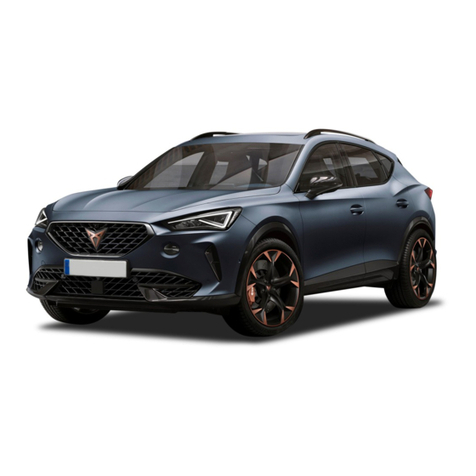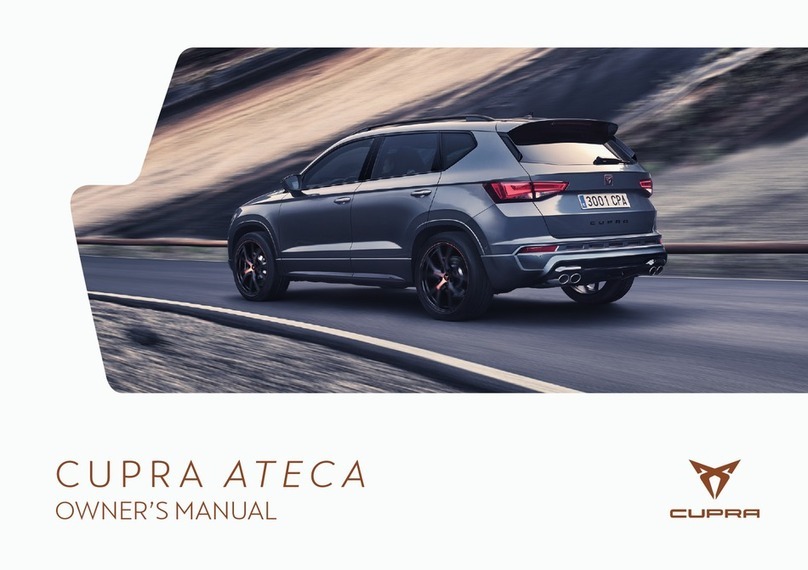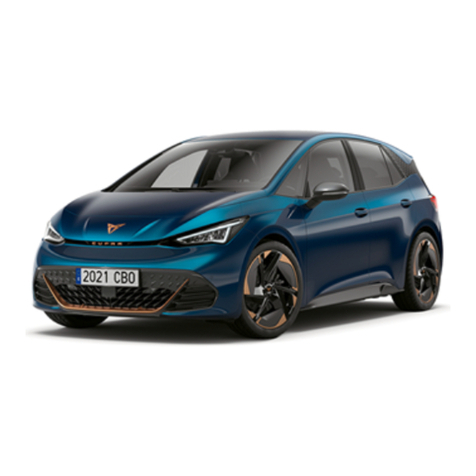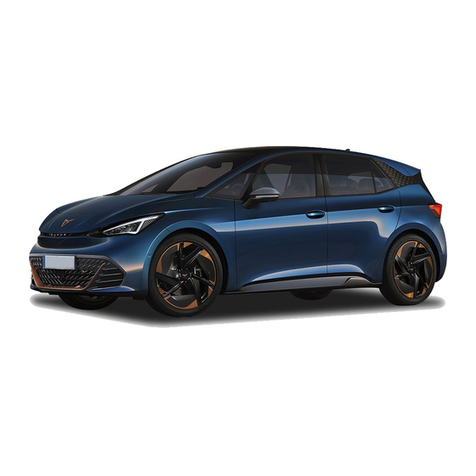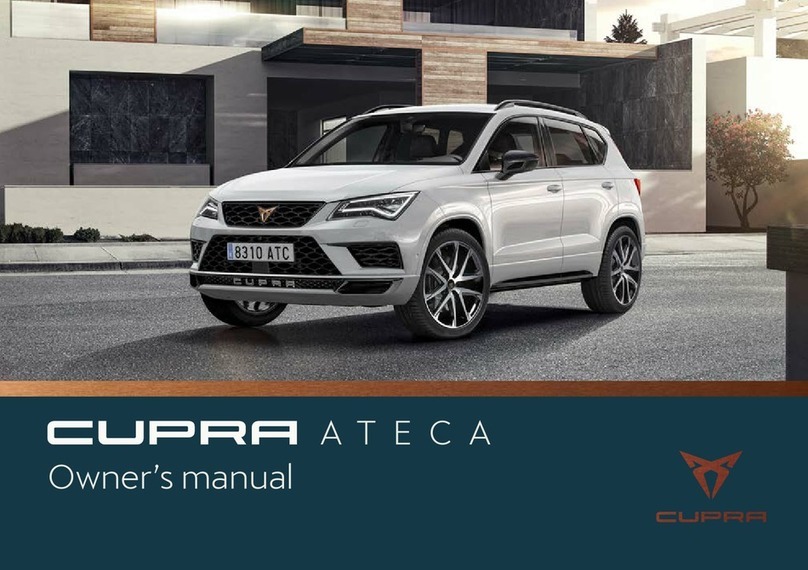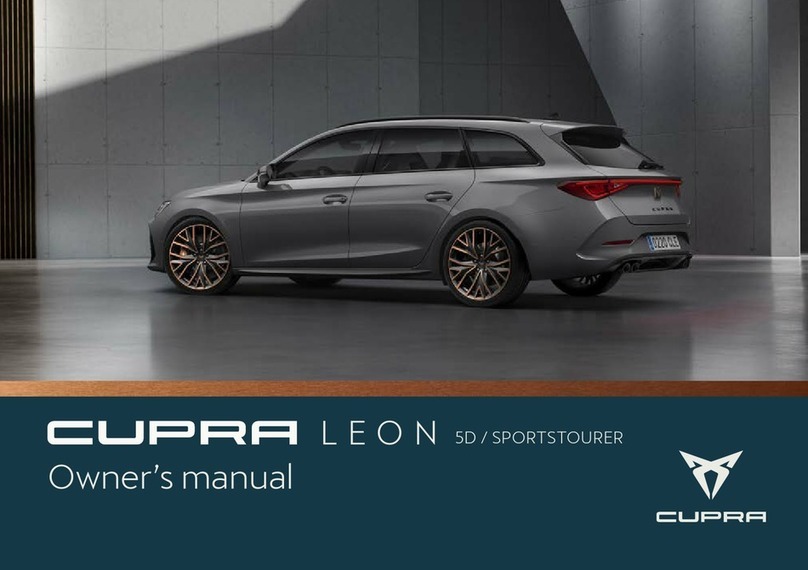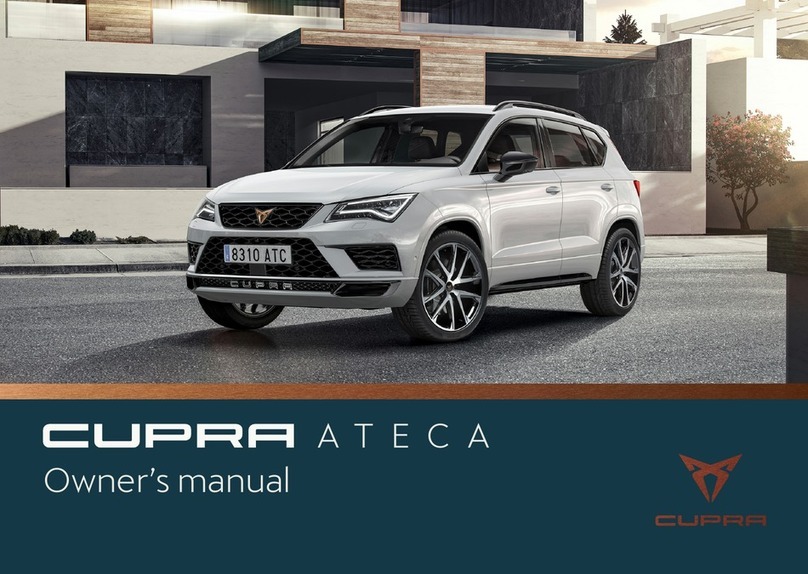
Table of Contents
Table of Contents
General views of the vehicle . . . . . . . . . . . . . . . 7
Exterior view . . . . . . . . . . . . . . . . . . . . . . . . . . . . . . . . . . . 7
Exterior view . . . . . . . . . . . . . . . . . . . . . . . . . . . . . . . . . . . 8
Overview (left hand drive) . . . . . . . . . . . . . . . . . . . . . . 9
Overview (right hand drive) . . . . . . . . . . . . . . . . . . . . 10
Interior view . . . . . . . . . . . . . . . . . . . . . . . . . . . . . . . . . . . 11
Safety . . . . . . . . . . . . . . . . . . . . . . . . . . . . . . . . . . . . . . . . 12
Safe driving . . . . . . . . . . . . . . . . . . . . . . . . . . . . . . . . . . . . 12
Advice about driving . . . . . . . . . . . . . . . . . . . . . . . . . . . . 12
Correct sitting position of vehicle occupants . . . . . . 13
Pedal area . . . . . . . . . . . . . . . . . . . . . . . . . . . . . . . . . . . . . . 15
Seat belts . . . . . . . . . . . . . . . . . . . . . . . . . . . . . . . . . . . . . . 16
The whys and wherefores of seat belts . . . . . . . . . . . . 16
How to properly adjust your seat belt . . . . . . . . . . . . . 19
Seat belt tensioners . . . . . . . . . . . . . . . . . . . . . . . . . . . . . 21
PreCrash system* . . . . . . . . . . . . . . . . . . . . . . . . . . . . . . . 22
Airbag system . . . . . . . . . . . . . . . . . . . . . . . . . . . . . . . . . . 23
Brief introduction . . . . . . . . . . . . . . . . . . . . . . . . . . . . . . . 23
Operation of the airbags . . . . . . . . . . . . . . . . . . . . . . . . 25
Transporting children safely . . . . . . . . . . . . . . . . . . . . 30
Safety for children . . . . . . . . . . . . . . . . . . . . . . . . . . . . . . 30
Emergencies . . . . . . . . . . . . . . . . . . . . . . . . . . . . . . . . . 40
Self-help . . . . . . . . . . . . . . . . . . . . . . . . . . . . . . . . . . . . . . 40
Information, assistance and emergency call serv-
ice* . . . . . . . . . . . . . . . . . . . . . . . . . . . . . . . . . . . . . . . . . . . . 40
Emergency equipment . . . . . . . . . . . . . . . . . . . . . . . . . . 41
Tyre repairs . . . . . . . . . . . . . . . . . . . . . . . . . . . . . . . . . . . . . 42
Changing a wheel . . . . . . . . . . . . . . . . . . . . . . . . . . . . . . . 44
Changing the windscreen wiper blades . . . . . . . . . . . 48
Jump start . . . . . . . . . . . . . . . . . . . . . . . . . . . . . . . . . . . . . . 50
Tow start and towing . . . . . . . . . . . . . . . . . . . . . . . . . . . . 51
Fuses and bulbs . . . . . . . . . . . . . . . . . . . . . . . . . . . . . . . . 56
Fuses . . . . . . . . . . . . . . . . . . . . . . . . . . . . . . . . . . . . . . . . . . 56
Changing bulbs . . . . . . . . . . . . . . . . . . . . . . . . . . . . . . . . . 59
Operation . . . . . . . . . . . . . . . . . . . . . . . . . . . . . . . . . . . . 65
Controls and displays . . . . . . . . . . . . . . . . . . . . . . . . . . 65
Interior view . . . . . . . . . . . . . . . . . . . . . . . . . . . . . . . . . . . . 65
Instruments and warning/control lamps . . . . . . . . 66
Instrument panel . . . . . . . . . . . . . . . . . . . . . . . . . . . . . . . 66
Using the instrument panel . . . . . . . . . . . . . . . . . . . . . . 80
Control lamps . . . . . . . . . . . . . . . . . . . . . . . . . . . . . . . . . . 81
Infotainment system . . . . . . . . . . . . . . . . . . . . . . . . . . . . 84
Multifunction steering wheel* . . . . . . . . . . . . . . . . . . . 89
Opening and closing . . . . . . . . . . . . . . . . . . . . . . . . . . . 90
Set of vehicle keys . . . . . . . . . . . . . . . . . . . . . . . . . . . . . . 90
Central locking . . . . . . . . . . . . . . . . . . . . . . . . . . . . . . . . . 92
Anti-theft alarm system* . . . . . . . . . . . . . . . . . . . . . . . . 98
Doors . . . . . . . . . . . . . . . . . . . . . . . . . . . . . . . . . . . . . . . . . . 101
Rear lid . . . . . . . . . . . . . . . . . . . . . . . . . . . . . . . . . . . . . . . . . 103
Window controls . . . . . . . . . . . . . . . . . . . . . . . . . . . . . . . . 107
Sunroof* . . . . . . . . . . . . . . . . . . . . . . . . . . . . . . . . . . . . . . . 109
Lights . . . . . . . . . . . . . . . . . . . . . . . . . . . . . . . . . . . . . . . . . . 112
Vehicle lighting . . . . . . . . . . . . . . . . . . . . . . . . . . . . . . . . . 112
Interior lights . . . . . . . . . . . . . . . . . . . . . . . . . . . . . . . . . . . 119
Visibility . . . . . . . . . . . . . . . . . . . . . . . . . . . . . . . . . . . . . . . 120
Windscreen wiper and rear window wiper sys-
tems . . . . . . . . . . . . . . . . . . . . . . . . . . . . . . . . . . . . . . . . . . . 120
Mirrors . . . . . . . . . . . . . . . . . . . . . . . . . . . . . . . . . . . . . . . . . 122
Sun protection . . . . . . . . . . . . . . . . . . . . . . . . . . . . . . . . . . 124
Seats and headrests . . . . . . . . . . . . . . . . . . . . . . . . . . . . 125
Adjusting seats . . . . . . . . . . . . . . . . . . . . . . . . . . . . . . . . . 125
Headrest . . . . . . . . . . . . . . . . . . . . . . . . . . . . . . . . . . . . . . . 126
Seat functions . . . . . . . . . . . . . . . . . . . . . . . . . . . . . . . . . . 128
Transport and practical equipment . . . . . . . . . . . . . 131
Storing objects . . . . . . . . . . . . . . . . . . . . . . . . . . . . . . . . . 131
Luggage compartment . . . . . . . . . . . . . . . . . . . . . . . . . . 132
Roof carrier* . . . . . . . . . . . . . . . . . . . . . . . . . . . . . . . . . . . 138
Storage compartment . . . . . . . . . . . . . . . . . . . . . . . . . . . 140
Power sockets . . . . . . . . . . . . . . . . . . . . . . . . . . . . . . . . . . 142
Air conditioning . . . . . . . . . . . . . . . . . . . . . . . . . . . . . . . 144
Heating, ventilation and cooling . . . . . . . . . . . . . . . . . 144
Infotainment system . . . . . . . . . . . . . . . . . . . . . . . . 152
Introduction . . . . . . . . . . . . . . . . . . . . . . . . . . . . . . . . . . . 152
First steps . . . . . . . . . . . . . . . . . . . . . . . . . . . . . . . . . . . . . . 152
Overview and controls . . . . . . . . . . . . . . . . . . . . . . . . . . 156
General instructions for use . . . . . . . . . . . . . . . . . . . . . 157
Data transfer . . . . . . . . . . . . . . . . . . . . . . . . . . . . . . . . . . . 163
SEAT CONNECT . . . . . . . . . . . . . . . . . . . . . . . . . . . . . . . . 163
Full Link . . . . . . . . . . . . . . . . . . . . . . . . . . . . . . . . . . . . . . . . 167
WLAN access point* . . . . . . . . . . . . . . . . . . . . . . . . . . . . 172
Infotainment operation . . . . . . . . . . . . . . . . . . . . . . . . 174
voice control* . . . . . . . . . . . . . . . . . . . . . . . . . . . . . . . . . . 174
Radio/Multimedia . . . . . . . . . . . . . . . . . . . . . . . . . . . . . . . 176
Navigation* . . . . . . . . . . . . . . . . . . . . . . . . . . . . . . . . . . . . 183
Telephone interface . . . . . . . . . . . . . . . . . . . . . . . . . . . . 190
Multimedia . . . . . . . . . . . . . . . . . . . . . . . . . . . . . . . . . . . . . 195
Driving . . . . . . . . . . . . . . . . . . . . . . . . . . . . . . . . . . . . . . . 196
Start and driving . . . . . . . . . . . . . . . . . . . . . . . . . . . . . . . 196
Starting and stopping the engine . . . . . . . . . . . . . . . . . 196
Start-Stop system . . . . . . . . . . . . . . . . . . . . . . . . . . . . . . . 200
DSG automatic transmission . . . . . . . . . . . . . . . . . . . . . 202
Gear-change recommendation . . . . . . . . . . . . . . . . . . 209
Hill Descent Control (HDC) . . . . . . . . . . . . . . . . . . . . . . 209
Steering . . . . . . . . . . . . . . . . . . . . . . . . . . . . . . . . . . . . . . . . 210
Driving modes (Drive Profile)* . . . . . . . . . . . . . . . . . . . 211
Driving tips . . . . . . . . . . . . . . . . . . . . . . . . . . . . . . . . . . . . . 213
5
